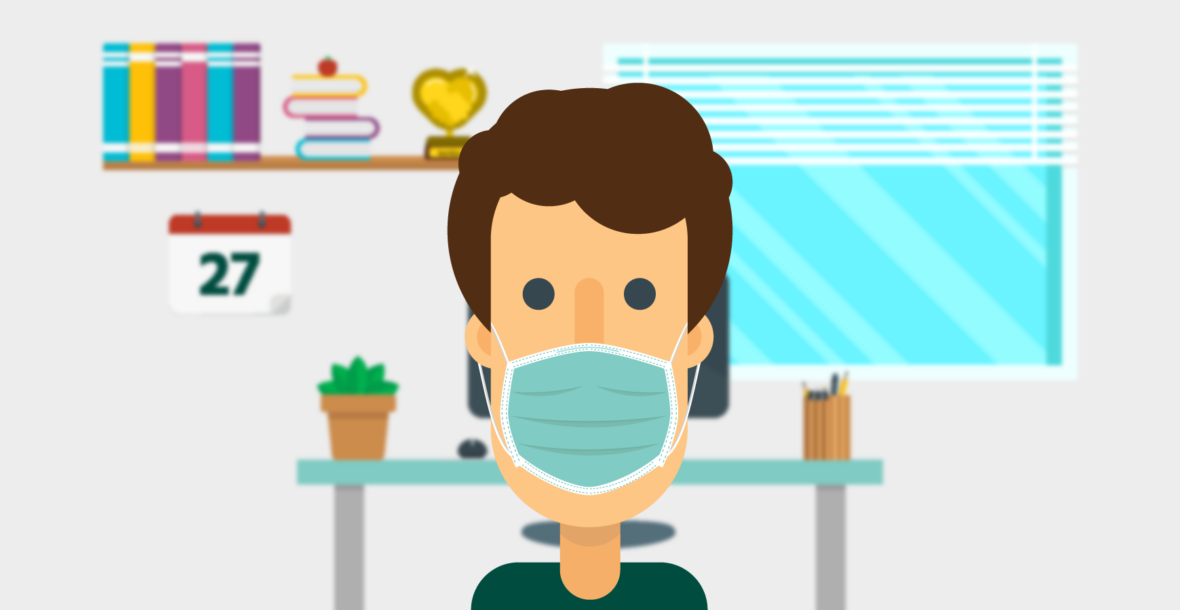The lasting impact of the corona crisis:
Accelerated development of the digital customer journey
The digital customer journey has been given an extra boost during the corona crisis. Consumers have been forced to change their shopping habits. Changes which will not necessarily return to ‘normal’ once the coronavirus eases its grip, and your business will have to adapt to remain competitive, and generate loyal customers.
Happy New Year! We made it into 2021. And even though we’re still in the shadow of the coronavirus, there is light at the end of the tunnel, as vaccination programmes are rolled out.
We all look forward to the restrictions imposed by the corona crisis being lifted. Just imagine being able to return to a life in which we can go to work, take part in workshops at which ideas can be generated, and attend conferences at which we can network. Back to a life in which we dare to plan events like birthdays, holidays and eating out.
But on the other hand, crises are often the best breeding grounds for ideas, and for shaking us out of old habits. For example, the wristwatch was invented during WWI, because a tool was needed to coordinate events on the battlefield. WWII brought women into the workplace (where they’ve stayed, fortunately) and Uber arose in the wake of the finance crisis. The corona crisis will also have a long-term and permanent effect on our society. Perhaps not in the form of a game-changing invention such as the wristwatch, but with new behavioural patterns, which will never disappear again.
They will include more focus on the work-family balance, because workers and executives have learned that working from home is possible and efficient. Fewer days spent on the road (which will also benefit the environment), because we’ve discovered that not all meetings require our physical presence. And our shopping habits have also changed. In line with the authorities shutting down high street shops, online shopping has gone through the roof. The same applies to goods we never used to buy online, and even the older segment of the population has joined the group of online shoppers to a greater extent. When the corona crisis is over, we can expect certain trends to continue.
COVID-19 has sped up the shift to digital shopping by FIVE YEARS
Source: TechCrunch
As online traffic grows, there are three areas you should be focusing on in particular, to ensure the best digital customer experience:
#1 Setting up Omnichannel Customer Service
When the number of online transactions, contacts and enquiries grows, expectations to the digital customer experience and pressure on digital customer service grow as well.
According to a survey conducted by Zendesk, 60% of customers say that a quick response is important to a good customer service experience, while 52% want a response available 24/7. Customers also expect to be able to access your business via a wide range of channels: social media, phone, forms, email and so on.
Omnichannel Customer Service is the solution for being able to fulfil such expectations. The principle is a system in which you can deal with all your customer contacts in one place. That ensures you can give your customers a cohesive, uniform and rapid response regardless of channel. It also streamlines the work of your agents and makes collaboration across functions and departments easier, which also boosts job satisfaction.
Does your customer service need a checkup?
Take a look at how we can help
#2 Better use of self-service tools
Few businesses have the resources to increase the number of agents they use, even when they receive more enquiries. That makes tools that enable customers to find the response they want the perfect solution. They can be in the form of a Help Centre, FAQs, forums, knowledge databases, video guides and the like.
Over 25% of all customers actually want to be able to find the answers they’re looking for, rather than having to contact an agent (source: Zendesk). That’s why optimum use of self-service tools means not just greater customer satisfaction, but it also gives your agents more time to resolve more complicated enquiries and of course to create better customer relationships.
Zendesk Guide is software designed to help your customers to help themselves
# Exploiting Automation and Artificial Intelligence
Intelligent chatbots, almost able to conduct a human dialogue. Predictive solutions, in which the combination of customer data and AI makes it possible to predict customer choices, enabling you to provide the most relevant help and personalise the experience.
Yes, the ways of using AI and automation are many, and the technology is improving every day. According to Zendesk, who have analysed data from 45,000 businesses, only just over 30% are currently using self-service tools, chatbots, automation and the like at this time. That means massive unexploited potential, and the consumers are ready for it.
